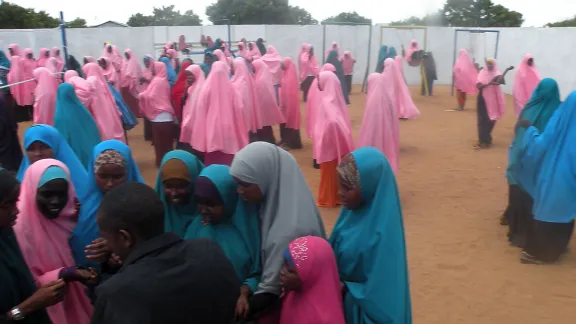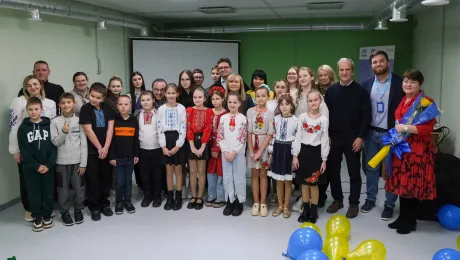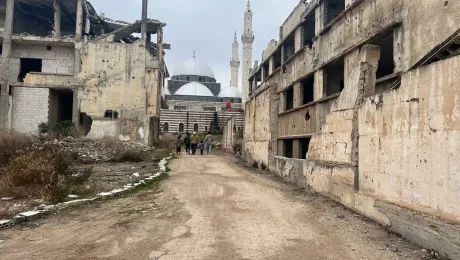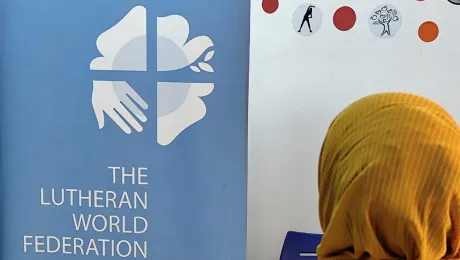
Girls assemble in a school yard in Dadaab refugee camp, Kenya. Education is a focus of LWF work in the camp. Photo: LWF/Kenya
The challenge of providing primary education for all in Dadaab refugee camps
(LWI) - If she had the nationality of the country in which she lives, Sowdo Mohamed Kilas, 18, would have been admitted to one of the best secondary schools in the country. However, the way things are her top marks ensured her a place in Waberi Secondary School, an overcrowded brick building where students attend school in shifts; morning and afternoon. Her place in the afternoon group means Sowdo will continue learning when the sun is high and students sit in the heat of 40 degrees or more.
Sowdo is a refugee in Dadaab, Kenya, the world's largest cluster of refugee camps with about 230,000 inhabitants. Her family fled ethnic clan fighting, after having lost several relatives in Somalia when she was nine years old. Sowdo, the fourth of six children, was enrolled in first grade in Upendo primary school run by The Lutheran World Federation (LWF).
Crowded schools
It takes a lot of determination to get a good education in Dadaab. About 120,000 children of school-going age live in the camps. Upendo primary school has 3,200 students – 62 students per teacher. “This ratio is but one indication of the gaps we have in providing access to quality education for all children,” says the LWF Country Representative in Kenya, Lennart Hernander.
Ideally, education transforms the lives of refugees in Dadaab. Girls like Sowdo who have gotten quality education in LWF schools are an investment that will go as far as rebuilding Somalia.
Harmful cultural practices often also pose a challenge to girls' access to education. Only one third of Upendo’s students are female, and as they get older, even more girls drop out of school. Girls are subjected to female genital mutilation and cutting, and early or forced marriages. Both boys and girls often start school later than the usual age, after attending religious Madrassa/Dugsi classes.
Sowdo completed eight years at Upendo primary school and sat the final examinations for the Kenya Certificate of Primary Education in 2015. As one of 300 students, 87 of them girls, she scored 373 out of 500 points, the best result for all the girls in Dadaab refugee camp that year.
Become a doctor
“This is a credit to the quality of the teaching and the schools, but even more to the determination of the refugee students and their families," Hernander says. “To stay focused under such circumstances, to pursue education when many parents take their children out of school because the family needs their support or is offered a dowry for marriage, shows a lot of strength and resilience.”
Sowdo lives with her mother, brothers and sisters in Hagadera, the largest of the four camps in Dadaab. Sowdo’s three older siblings also completed their Certificate of Primary Education exams. Her elder sister and brother are in their final year of secondary school, her sister Aniso sat the same exams at the same time with her and is also attending secondary school.
None of them scored as many points as Sowdo did, though. “I want to become a doctor and I hope I will be able to reach that goal,” she says. “I have been advocating for girls to receive education, and I hope to be able to promote peace in our unstable country of origin,” Sowdo says.
“Ideally, education transforms the lives of refugees in Dadaab refugee camp. Girls like Sowdo who have gotten quality education in LWF schools are an investment that will go as far as rebuilding Somalia,” Hernander says.


